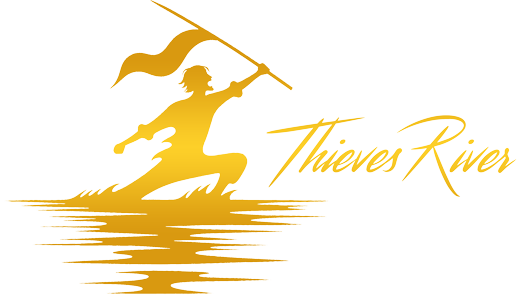The Minnesota state flag has a rich history, marked by changes that mirror the state’s evolving identity. From its original design in 1893 to the new Minnesota state flag adopted in 2024, each iteration of the flag has carried the state’s story forward. This journey not only highlights Minnesota's past but also its ongoing commitment to inclusivity and representation.
As Minnesotans, we often take pride in the symbols that reflect our state. The state flag is one such symbol, evolving over time to reflect both our rich northern history and changing values. But what do these changes tell us about who we are and where we’re headed?
Let’s dive into the fascinating journey of the Minnesota state flag, exploring how each version has shaped our collective identity and what the new Minnesota flag means for the future.
The Early Years - The First Minnesota State Flag (1893-1957)

History of the First Minnesota State Flag
Minnesota adopted its first official state flag in 1893, 35 years after achieving statehood in 1858. The decision came as Minnesota prepared to participate in the World's Columbian Exposition in Chicago (Chicago World's Fair), an event showcasing states' identities and achievements. The desire to create a distinct symbol that represented Minnesota’s heritage and natural beauty led to the design of its first official flag.
Flag Overview
The original Minnesota flag was unique for its two-sided design: blue on one side and white on the other. Both sides displayed the state seal, which featured a Native American on horseback riding westward, symbolizing the expansion of settlers, often at the expense of indigenous peoples. A pioneer farmer, with plow in hand, worked the fields nearby, representing a rich agricultural presence. Natural elements such as water and pine trees further emphasized the state’s resources and landscapes.
Minnesota Flag Symbolism

Around the central seal were 19 stars, signifying Minnesota as the 19th state admitted to the Union. At the top of the flag was the French motto, "L'Étoile du Nord" (The Star of the North), emphasizing Minnesota’s position as the northernmost state in the contiguous United States and a nod to its French heritage.
Design Challenges
The two-sided design posed practical challenges. The dual-color scheme led to issues like color fading over time, making it difficult to maintain the flag’s vibrant appearance. Additionally, the intricate design of the seal made it complex to reproduce and hard to recognize from a distance. These challenges eventually prompted calls for an initial redesign in the following decades.
Minnesota 1957 Flag Redesign

New Flag Design Details
The redesigned MN flag adopted a single-color background: entirely blue. The state seal was placed in the center within a white circle bordered by yellow, making it more visible from a distance. This design aimed to maintain symbolic elements while improving the flag’s functionality.
Symbol Retention
Despite the changes, the 1957 flag preserved key cultural symbols:
- The French motto, "L'Étoile du Nord" (The Star of the North), remained prominent, reflecting Minnesota’s northern identity and French heritage.
- The 19 stars still encircled the seal, maintaining recognition of Minnesota as the 19th state to join the Union after the original colonies.
- The flag continued to highlight 1858, the year of Minnesota’s statehood, linking to its historical roots.
This streamlined version not only provided greater visibility and durability but also made the flag easier to produce and identify, setting the stage for over six decades as the state’s official mark.
Minor Changes To The 1983 Minnesota Flag

Adjustments To The Minnesota Flag
In 1983, Minnesota made several changes to its flag, refining both its colors and central seal. The blue field, which had previously been a royal blue, was changed to a medium blue for better visibility. However, the specific shade of blue could vary depending on the flag maker. The flag remained rectangular, with the seal prominently centered. According to state statute, the flag was bordered and finished with gold fringe, though this feature was rarely seen and mostly used for indoor flags.
Changes To The State Seal
The 1983 redesign brought notable updates to the seal, emphasizing Minnesota’s natural resources and history:
- The Native American figure was repositioned to face more directly south, turning towards the farmer in the seal, creating a greater sense of interaction.
- The depiction of the Mississippi River and St. Anthony Falls was added to highlight their historical importance in the state’s transportation, industry and settlement.
- Beyond the falls, three pine trees were included to represent the state tree, the Norway pine, and the three major pine regions: the St. Croix, Mississippi, and Lake Superior regions.
Retained Design Elements
Despite these updates, the flag maintained several elements from earlier designs:
- The three important years in Minnesota history were still displayed: 1819 (establishment of Fort Snelling), 1858 (statehood), and 1893 (adoption of the first official flag).
- The pink-and-white lady's slipper, Minnesota's state flower, continued to be a featured element.
- The 19 stars, symbolizing Minnesota as the 19th state admitted after the original 13 colonies, remained in the same pattern as on the 1957 flag.
The 1983 version balanced historical continuity with updates that better reflected the state's cultural and natural heritage. It aimed to make the flag more representative while keeping the core elements that symbolized Minnesota’s identity. However, not everyone was happy.
Calls To Redesign The Minnesota State Flag

The 1983 redesign of the Minnesota flag faced growing criticism over the years, primarily due to issues of illegibility, its similarity to other state flags and failure to follow vexillological best practices, which emphasize simplicity and distinctiveness. The flag's intricate state seal, set against a medium blue field, was hard to recognize from a distance and often blended in with other blue state flags.
Additionally, the flag's depiction of Minnesota's history has been criticized for presenting a distorted view of European settlement, showing peaceful coexistence between settlers and Indigenous peoples while downplaying the violence and displacement that occurred.
This critique has highlighted the flag’s historical inaccuracy and cultural insensitivity, prompting calls for a more inclusive and representative symbol. These concerns ultimately contributed to the 2024 redesign, which aimed to create a flag that was more recognizable.
New Minnesota State Flag 2024

Legislative Action
In 2023, the Minnesota Legislature established the State Emblems Redesign Commission to create new designs for the state flag and seal. This decision was fueled by longstanding critiques of the 1983 flag’s design, including issues of legibility and cultural representation, as well as a desire to create a more distinct and inclusive symbol for the state.
Public Involvement
The redesign process encouraged broad public participation, resulting in over 2,100 flag design submissions from Minnesotans. This high level of engagement demonstrated the importance of the MN flag to its residents and underscored the state’s commitment to a collaborative approach in creating the new emblem.
New Design Adoption
On May 11, 2024, Minnesota officially adopted its new state flag. The updated design features a dark blue stylized outline of Minnesota on the left side containing a white eight-pointed star pointing north, symbolizing the state motto "L'Étoile du Nord." The right side of the flag displays a solid light blue field representing the state’s abundant lakes and rivers. The new Minnesota state flag aims to be more recognizable, meaningful and reflective of the state's natural beauty and heritage.
About The New Minnesota Flag Design
The 2024 Minnesota flag offers a bold and modern look, designed to be simpler, more distinctive and better aligned with vexillological principles of good flag design. It moves away from the intricate state seal of past versions, opting instead for clean lines and clear symbolism. This new design focuses on elements that are both visually striking and meaningful, making it easier to recognize from a distance.
Symbolism
The 2024 flag design retains a strong sense of Minnesota’s identity through its core symbols:
- Dark Blue Stylized Outline of Minnesota: The outline of the state is positioned on the left side of the flag. It represents Minnesota's geographical shape and creates an instantly recognizable symbol of the state.
- White Eight-Pointed Star: Placed inside the state outline, the eight-pointed star points northward to reflect Minnesota’s motto, "L'Étoile du Nord" (The Star of the North). The star is also commonly used in indigenous cultures, while forming the shape of the letter "M", and also matching the floor design of the Capitol's rotunda.
- Solid Light Blue Field: The flag’s right side features a solid light blue background, representing Minnesota’s abundant waterways. This design choice pays homage to the state's nickname, Land of 10,000 Lakes, and highlights the importance of water to Minnesota’s culture, economy and natural beauty.
By moving to a more abstract and minimal design, the new Minnesota state flag aims to be both a timeless representation of the state’s heritage and a forward-looking symbol that fosters pride among all Minnesotans.
Minnesota Flag History: Celebrating The North Star State

The Minnesota flag has consistently been a symbol of state pride, identity and heritage, evolving alongside the values of its residents. From its original two-sided design in 1893 to the simpler 1957 version and the revised 1983 redesign, each iteration of the MN flag has mirrored the state’s journey toward greater representation.
The adoption of the new Minnesota state flag in 2024 marks a significant step forward, embracing a design that is not only more recognizable but also deeply rooted in the state’s wilderness and diversity. This modern design signifies Minnesota’s enduring spirit and commitment to progress, providing a unifying emblem that can be celebrated by all Minnesotans. As the state continues to grow and change, so too will its symbols, capturing the spark of Minnesota’s past, present and future.
Pick Up A Minnesota Flag Shirt

Ready to wear your Minnesota pride? Check out the Thieves' River Minnesota State Flag Collection and sport the latest in North Star style. Whether you're repping the new Minnesota flag on a cabin weekend, a trip to the Boundary Waters or just grabbing a Lucy with friends these tees are made for locals by locals. So grab yours now and show the world you’re a true Minnesotan — always ready for adventure!


